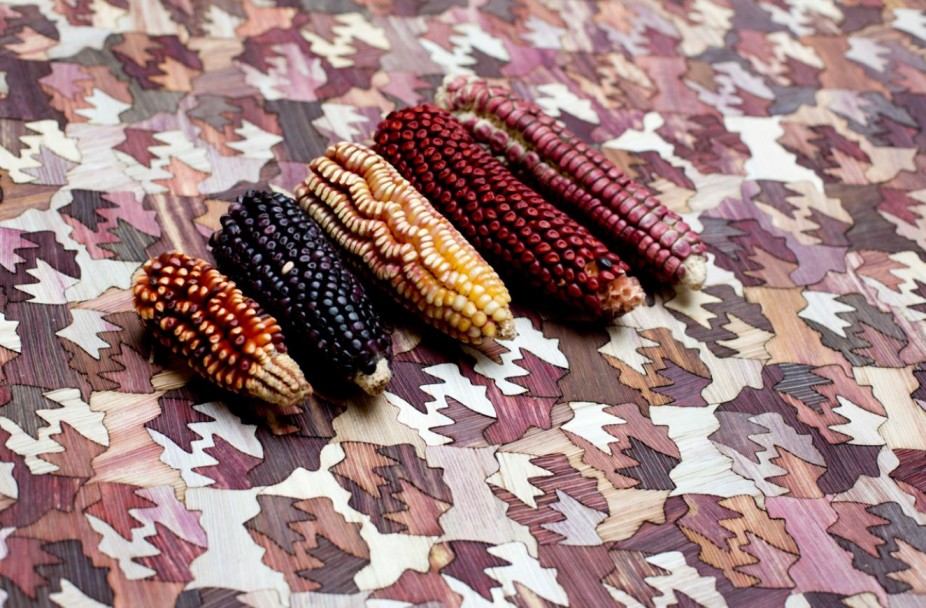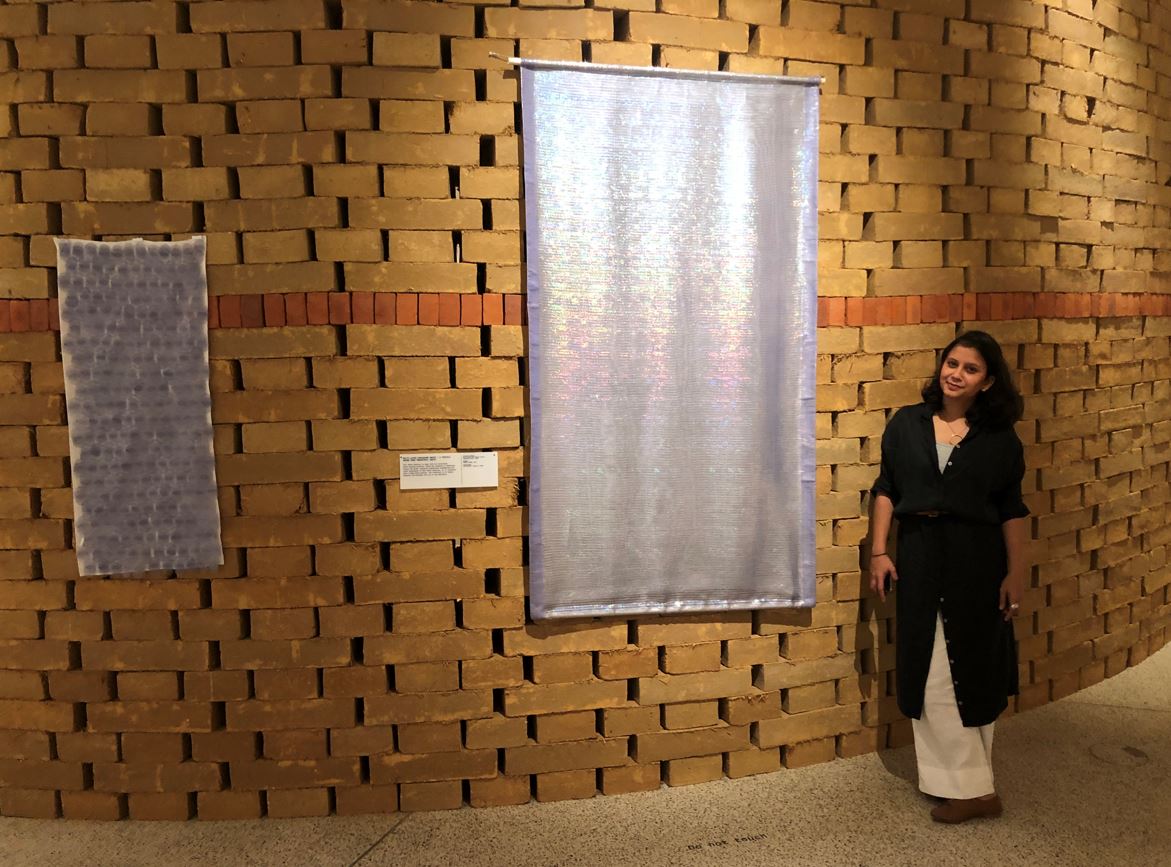From Gloves to Condoms, Inspiring Designer Proves All Waste Can Have a New Future
Shubhi Sachan, a TEDx speaker, design specialist and consultant for many corporate houses, has worked on many pioneering waste upcycling projects. Her latest project is the creation of a waste 'Material Library' that will hold samples to inspire future pioneers.

We are living in an era of ‘Waste Age’. The amount of waste that we knowingly generate is smothering us. According to the World Bank report, the world annually generates 2.01 billion tonnes of municipal solid waste. This is expected to grow to some 3.40 billion tonnes by 2050.
At present, from this huge quantity, at least 33 per cent isn’t managed in an environmentally safe manner. Depending on the financial position, on average, a person generates anywhere between the range of 0.11 kg to 4.54 kg waste per day.
The richer the person, the more waste they generate.
If you’ve travelled from Delhi to Gazipur, Mumbai to Badlapur, Bengaluru to Mavallipura or nearby any other big city, you will see sizable ‘hillocks’ of 10 to 30 metres or more jutting out from the flat landscape on the side of the roads.
On closer examination, one realises that they aren’t green beautiful hillocks but humongous dumps of garbage piling up every day, causing great environmental and health hazards to citizens.
“What people don’t understand is that the majority of this waste needn’t end up in landfills. It can be reused and recycled in very constructive ways at a low cost. All we need is some imagination and willpower,” explains Noida-based Shubhi Sachan, a textile designer who is passionate about sustainability.
She has now started a unique concept of ‘Material Library’.

This is a collector’s place where sample materials are gathered from sheds, labs, industries, hospitals, malls, markets, homes, agricultural farms and film sets, among other places.
Unlike usual libraries of books, CDs, data, etc, a Material Library is an exciting hub of creativity, imagination and activity to find ways to design and reuse everyday waste.
She says, “There are several such libraries around the globe that talk about material innovation and archive to change the landscape for makers. But at our library, we are aiming to house the material from industrial and agricultural waste, which aren’t only a problem to the industries and farmers but also a red flag for the environment.”
These materials need to be housed under a roof and exposed to potential makers, students and even visionaries to make them understand the possible potential of these materials besides exposing everyone to the sheer scale of the problem.
“Often textile industry waste is considered as textile or plastic industry waste as plastic and laymen assume that these are recyclable materials, which is not true,” says Sachan who is also a TEDx speaker, design specialist and consultant for many corporate houses.
A couple of her designed fabric products made from plastic waste using multi-layered packaging waste and textile industrial manufacturing waste are exhibited at the ongoing exhibition at London’s Design Museum. The theme for this year’s exhibition is ‘Waste Age’.
It’s an international exhibition open till February 2022, of designs using waste made by well-known fashion designers and fashion houses including the likes of Stella McCartney, The Ellen MacArthur Foundation, Bethany Williams and many others. Displayed in the exhibition are products made from e-waste to plastic bottle caps, corn cob waste, industrial waste from boot factories, agave leaves leftover from tequila distilleries and many others which are used in making beautiful everyday usage and also luxury products. The end products at the exhibitions are so artistically made that there is a need to emphatically tell that the base material used was once clubbed as ‘waste’.
Rethinking Concept of Waste

As the curator of this exhibition, Gemma Curtinsaid says, “We must face the problem of waste. We can no longer ignore what happens to things when we get rid of them. Instead of thinking of objects as things that have an end life, they can have many lives. This is not just an exhibition, it is a campaign, and we all have an active part in our future.”
Waste is thought of only as plastic waste like water bottles, boxes, bags, household goods, etc. These of course are waste that is being recycled. But what about the wrappers or multi-layered colourful packing materials of edible commodities like chips, chocolates, biscuits, namkeens, etc?
Then there is our perception of medical waste. For us, only medical syringes, drip bottles, surgical masks, are classified as waste. What we don’t realise is the waste created by the small foils of our daily use of medicines, sachets of fruit salts to relieve the discomfort of acidity, shampoo sachets, mosquito repellents coverings, menstrual pads, condoms and the list goes on.
Elaborating further Sachan adds, “There is unbelievable waste in the textile industries. It’s not only the left-over pieces of fabric but innumerable pieces of thread, rubber tubes, needles, copper wires, spindles and many more things”.
One of the best examples of recycling non-hazardous industrial waste was her project titled Punah with a multinational conglomerate.
Here, she recycled 1,80,000 pairs of protective rubber, cotton and other gloves per annum in one unit

Sachan helped design methods of recycling these cotton gloves and turning them into raw material which can be used in packaging, weaving new fabric that in turn can be used in apparel design or made into ropes that can be used in lining the chairs, tables etc.
There is another interesting waste that is unknowingly generated during machine processing in the manufacturing units and that is metal waste like copper, brass, steel, etc. Household waste of these products like broken or old vessels is generally sold to our neighbouring kabadiwallas. But industrial waste which runs into lakhs of kilos in the form of small metallic pieces, thin wispy strips can be recycled by turning them into new products to be reused in manufacturing other products.
Sachan helped plan another very interesting project titled Cancelled Plan with a pharmaceutical company. She helped design this project with Mallika Reddy where they collect waste like blister packs used in packaging from pharmaceutical companies. Unconventional material like aluminium and plastic is taken from this, handwoven by local weavers in Warangal near Hyderabad and used to make luxury accessories products like handbags or decorative pieces, etc. Then they get waste from condom manufacturing units where nearly 4 to 5 per cent of condoms get rejected for damage and so are sent to landfills. At Cancelled Plan, these are collected, processed and reused, especially as embellishments, embroidery designs in high fashion industries.
At Sachan’s Material Library at Noida, this is what one can see and learn methods to reuse waste. “We collect a small amount from one kilo to five kilos from different industrial units, send a small amount to a lab to analyse and understand what material can be extracted and reused. Then I conceptualise new design to reuse products”.
Many students of design, engineering, architect schools, even new jewellery and apparel designers who want to practice slow and sustainable techniques make a beeline to Sachan for help and advice. What she and like-minded designers all over the world are trying is to use our daily waste creatively to help save the planet. We need to invest in their products.
(Edited by Yoshita Rao)
This story made me
- 97
- 121
- 89
- 167
Tell Us More
We bring stories straight from the heart of India, to inspire millions and create a wave of impact. Our positive movement is growing bigger everyday, and we would love for you to join it.
Please contribute whatever you can, every little penny helps our team in bringing you more stories that support dreams and spread hope.



















